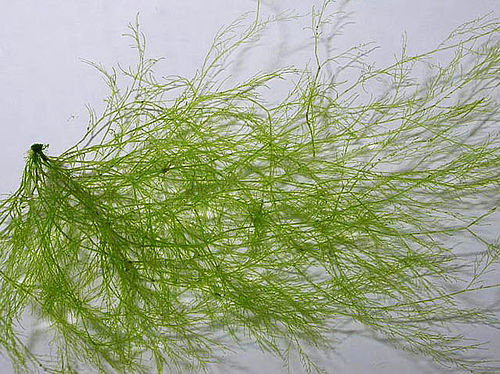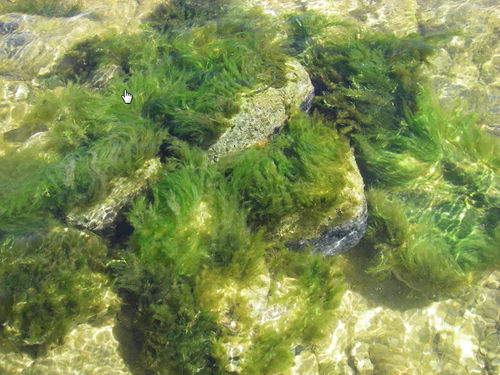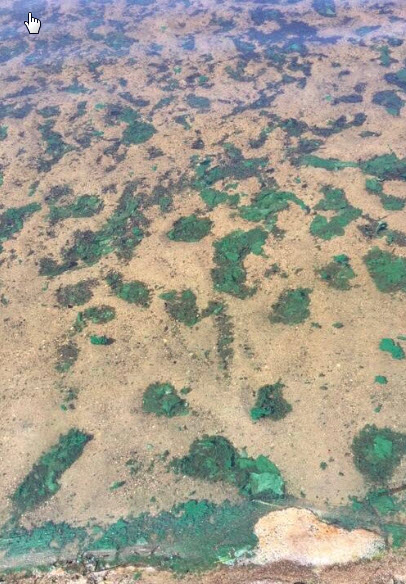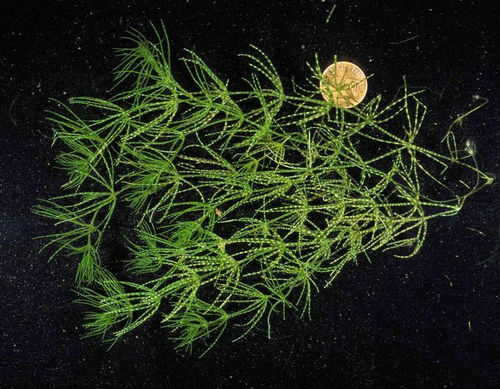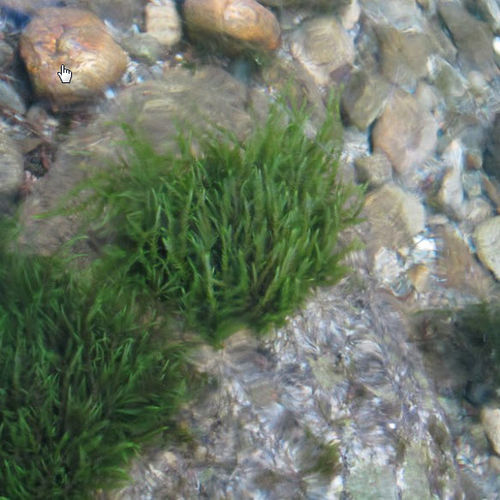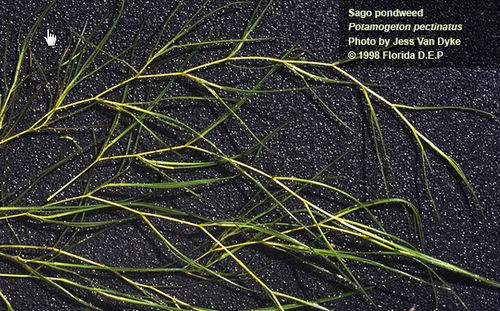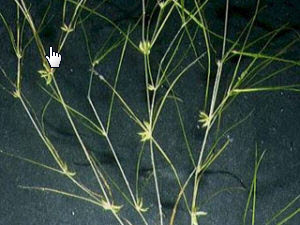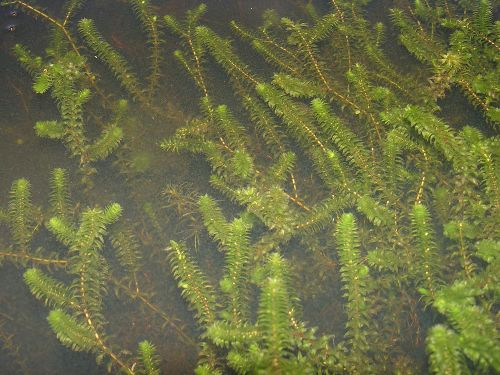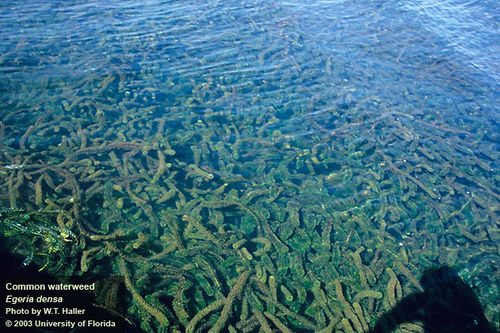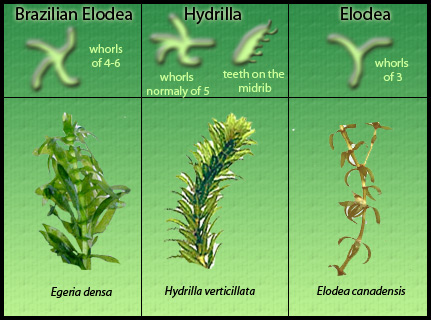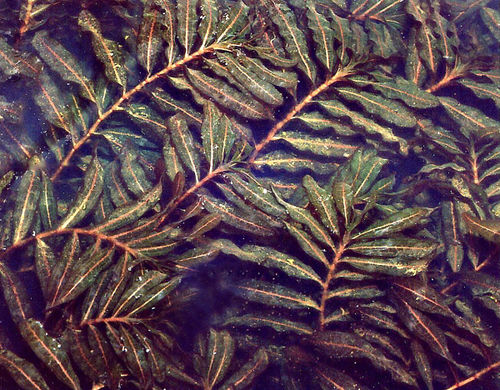Difference between revisions of "Algae and Aquatic Macrophytes"
Cellsworth (Talk | contribs) |
Cellsworth (Talk | contribs) |
||
| (One intermediate revision by the same user not shown) | |||
| Line 25: | Line 25: | ||
== '''Algae and Aquatic Macrophytes below Glen Canyon Dam'''== | == '''Algae and Aquatic Macrophytes below Glen Canyon Dam'''== | ||
| − | The aquatic flora within the project area is currently dominated by various species of algae, macrophytes, and bryophytes including filamentous green algae (mainly ''Ulothrix zonata'' and ''Spirogyra'' spp.), the stonewort ''Chara contraria'', the aquatic moss ''Fontinalis'' spp., and the macrophyte ''Potamogeton pectinatus''. Cladophora occurs along the entire course of the river within the project area, although its abundance decreases downstream (Blinn and Cole 1991; Shannon et al. 1994; Shaver et al. 1997; Stevens, Shannon et al. 1997) due to higher suspended sediment loads contributed by major perennial tributaries (especially the Paria River and Little Colorado River) (Blinn et al. 1995). ''Cladophora'' is colonized by a variety of diatom species (Dodds and Gudder 1992) that are an important component of the food base in the tailwaters of Glen Canyon Dam (Blinn et al. 1992). The cyanobacteria ''Oscillatoria'' is co-dominant with ''Cladophora'' in Marble Canyon and dominates farther downstream in the Grand Canyon due to its tolerance of exposure to air and lower light levels compared to ''Cladophora'' (Blinn et al. 1992; Stevens, Shannon et al. 1997). Submerged macrophytes in the mainstem, backwaters, and off channel ponds in the project area include non-native species such as horned pondweed (''Zannichellia palustris''), Canadian waterweed (''Elodea canadensis''), Brazilian waterweed (''Egeria densa''), pondweed (''Potamogeton'' spp.), aquatic moss (''Fontinalis'' spp.), and muskgrass (''Chara'' spp. [green alga]) (Carothers and Minckley 1981; Valdez and Speas 2007). Curly pondweed (''Potamogeton crispus''), which is known to be present within the Grand Canyon portion of the project area is believed to pose a medium level of threat to the aquatic ecosystem because it competes with native aquatic plants and can cause fish die-offs when algal blooms begin to die off; curly pondweed can also clog some waterways and inhibit recreational activities | + | The aquatic flora within the project area is currently dominated by various species of algae, macrophytes, and bryophytes including filamentous green algae (mainly ''Ulothrix zonata'' and ''Spirogyra'' spp.), the stonewort ''Chara contraria'', the aquatic moss ''Fontinalis'' spp., and the macrophyte ''Potamogeton pectinatus''. Cladophora occurs along the entire course of the river within the project area, although its abundance decreases downstream (Blinn and Cole 1991; Shannon et al. 1994; Shaver et al. 1997; Stevens, Shannon et al. 1997) due to higher suspended sediment loads contributed by major perennial tributaries (especially the Paria River and Little Colorado River) (Blinn et al. 1995). ''Cladophora'' is colonized by a variety of diatom species (Dodds and Gudder 1992) that are an important component of the food base in the tailwaters of Glen Canyon Dam (Blinn et al. 1992). The cyanobacteria ''Oscillatoria'' is co-dominant with ''Cladophora'' in Marble Canyon and dominates farther downstream in the Grand Canyon due to its tolerance of exposure to air and lower light levels compared to ''Cladophora'' (Blinn et al. 1992; Stevens, Shannon et al. 1997). Submerged macrophytes in the mainstem, backwaters, and off channel ponds in the project area include non-native species such as horned pondweed (''Zannichellia palustris''), Canadian waterweed (''Elodea canadensis''), Brazilian waterweed (''Egeria densa''), pondweed (''Potamogeton'' spp.), aquatic moss (''Fontinalis'' spp.), and muskgrass (''Chara'' spp. [green alga]) (Carothers and Minckley 1981; Valdez and Speas 2007). Curly pondweed (''Potamogeton crispus''), which is known to be present within the Grand Canyon portion of the project area is believed to pose a medium level of threat to the aquatic ecosystem because it competes with native aquatic plants and can cause fish die-offs when algal blooms begin to die off; curly pondweed can also clog some waterways and inhibit recreational activities [https://parkplanning.nps.gov/showFile.cfm?projectID=74515&MIMEType=application%252Fpdf&filename=Expanded%20Non%5FNative%20EA%20Sept%202018%20508%2Epdf&sfid=341637]. |
|}<!-- | |}<!-- | ||
| Line 43: | Line 43: | ||
|style="color:#000;"| | |style="color:#000;"| | ||
| − | [[File:Cladophora_(1).jpg|thumb|center| | + | [[File:Cladophora_(1).jpg|thumb|center|500px|Cladophora, a filamentous green algae (''Ulothrix zonata'' and ''Spirogyra'' sp.)]] |
| − | [[File:Oscillatoria.jpg|thumb|center| | + | [[File:Oscillatoria.jpg|thumb|center|500px|''Oscillatoria'' a filamentous blue-green algae ]] |
| − | [[File:Chara.jpg|thumb|center| | + | [[File:Chara.jpg|thumb|center|500px|Stonewort or Muskgrass (''Chara sp.'')]] |
| − | [[File:Fontinalis_moss.jpg|thumb|center| | + | [[File:Fontinalis_moss.jpg|thumb|center|500px|Aquatic moss (''Fontinalis'' sp.)]] |
| − | [[File:Potamogeton_pectinatus.jpg|thumb|center| | + | [[File:Potamogeton_pectinatus.jpg|thumb|center|500px|Sago pondweed (''Potamogeton_pectinatus'')]] |
| − | [[File:Horned_pondweed_Zannichellia_palustris.jpg|thumb|center| | + | [[File:Horned_pondweed_Zannichellia_palustris.jpg|thumb|center|500px|Horned pondweed (''Zannichellia palustris'')]] |
| − | [[File:Elodea_canadensis.jpg|thumb|center| | + | [[File:Elodea_canadensis.jpg|thumb|center|500px|Canadian waterweed (''Elodea canadensis'')]] |
| − | [[File:Egeria_densa.jpg|thumb|center| | + | [[File:Egeria_densa.jpg|thumb|center|500px|Brazilian waterweed (''Egeria densa'')]] |
| − | [[File:Elodea-hydrilla-egeria.jpg|thumb|center| | + | [[File:Elodea-hydrilla-egeria.jpg|thumb|center|500px|Brazilian vs Canadian waterweed (''Egeria densa'' vs ''Elodea canadensis'')]] |
| − | [[File:PotamogetonCrispus.jpg|thumb|center| | + | [[File:PotamogetonCrispus.jpg|thumb|center|500px|Curly pondweed (''Potamogeton crispus'')]] |
|} | |} | ||
Latest revision as of 14:29, 5 September 2019
|
|
Algae and Aquatic Macrophytes below Glen Canyon DamThe aquatic flora within the project area is currently dominated by various species of algae, macrophytes, and bryophytes including filamentous green algae (mainly Ulothrix zonata and Spirogyra spp.), the stonewort Chara contraria, the aquatic moss Fontinalis spp., and the macrophyte Potamogeton pectinatus. Cladophora occurs along the entire course of the river within the project area, although its abundance decreases downstream (Blinn and Cole 1991; Shannon et al. 1994; Shaver et al. 1997; Stevens, Shannon et al. 1997) due to higher suspended sediment loads contributed by major perennial tributaries (especially the Paria River and Little Colorado River) (Blinn et al. 1995). Cladophora is colonized by a variety of diatom species (Dodds and Gudder 1992) that are an important component of the food base in the tailwaters of Glen Canyon Dam (Blinn et al. 1992). The cyanobacteria Oscillatoria is co-dominant with Cladophora in Marble Canyon and dominates farther downstream in the Grand Canyon due to its tolerance of exposure to air and lower light levels compared to Cladophora (Blinn et al. 1992; Stevens, Shannon et al. 1997). Submerged macrophytes in the mainstem, backwaters, and off channel ponds in the project area include non-native species such as horned pondweed (Zannichellia palustris), Canadian waterweed (Elodea canadensis), Brazilian waterweed (Egeria densa), pondweed (Potamogeton spp.), aquatic moss (Fontinalis spp.), and muskgrass (Chara spp. [green alga]) (Carothers and Minckley 1981; Valdez and Speas 2007). Curly pondweed (Potamogeton crispus), which is known to be present within the Grand Canyon portion of the project area is believed to pose a medium level of threat to the aquatic ecosystem because it competes with native aquatic plants and can cause fish die-offs when algal blooms begin to die off; curly pondweed can also clog some waterways and inhibit recreational activities [1]. |
| -- |
-- |
-- |
|---|
|
|
